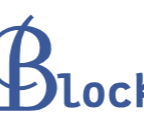What Is Ethereum-The Complete Guide For A Crypto Enthusiast
Cryptocurrency has garnered a lot of attention from all around the globe especially with the rise of Bitcoin. Ethereum is a new rising star who has entered into this game recently. It has opened the door to the potential of blockchain technology usage for different kinds of applications.
But what is Ethereum and what does this new technology mean for the future? Here is the complete guide for a crypto enthusiast.
What is Ethereum
Ethereum is an open-source, decentralized and distributed blockchain-based computing platform. It is also an operating system featuring a smart contract. The platform was proposed by Vitalik Buterin in late 2013. It was developed through online crowdfunding which has taken place between July and August 2014. It went live on 30 July 2015. Ether is a token created by the platform. Its blockchain is known as Ethereum blockchain. Participant mining nodes are rewarded with Ether for solving mathematical equations. Ether is known as a crypto-fuel helping smart contracts to run. The crypto-fuel ether also powers the Ethereum blockchain or Ethereum network. An important part of ethereum is a technology called Ethereum Virtual Machine (EVM) also known as a nerve center of the platform.
Vitalik Buterin
Vitaly Dmitriyevich “Vitalik” Buterin is a Russian-Canadian programmer and writer. He was born on January 31, 1994, in a town of Kolomna, Moscow Oblast, Russia. He is also a co-founder of Ethereum and a co-founder of Bitcoin Magazine. He lived in Russia for 6 years because his parents emigrated to Canada for better employment opportunities. He was placed in programming during his third grade of a Canadian primary school. He heard about Bitcoin from his father for the first time. Bitcoin attracted his interest due to its decentralized nature. He began to spend his time on various Bitcoin-related forums and research on the network. He wanted to join the Bitcoin economy, but he didn’t have the computing power to mine or the cash to purchase Bitcoin. Therefore, he began to write articles for a blog and earn five Bitcoins per article. His articles impressed Romania-based Bitcoin enthusiast Mihai Alisie and both co-founded Bitcoin Magazine. He also published a white paper of Ethereum in 2013. His friends came to Vitalik to discuss this new concept. The core team consists of Vitalik Buterin, Mihai Alisie, Anthony Di Iorio, Charles Hoskinson, Joe Lubi, and Gavin Wood announced this concept publicly at a Bitcoin Conference, Miami, in January 2014. The team decided to hold an Ether crowdsale after a few months.
Smart Contract
Smart contracts are self-executing and self-enforcing computer programs created with required terms and conditions. The main purpose of smart contracts in the blockchain is to facilitate, verify and enforce the negotiation of a contract related to digital assets such as money, content, shares, property, and anything of value. The contracts provide various multiple advantages to online transactions.
Data Security: Cryptography is used in smart contracts to secure all information and communication over the Internet.
Saves Costs and Time: It facilitates transactions without the involvement of intermediaries.
Transparency: All information and transactions data will be fully visible to all participants.
Traceability: All information and transactions data are time-stamped. It is easy to verify the whole path of a particular transaction from production and distribution to end-user.
Accuracy: All information and transactions data are recorded explicitly on the basis of those terms and conditions which are already set in smart contracts.
Storage and Backup: Transactions get stored permanently.
Guaranteed Outcomes: All transactions will be carried out on the basis of terms and conditions. If the terms and conditions are failed to match, then a particular transaction will not occur.
Decentralization: No intermediaries can control smart contracts as they are self-executor.
Ethereum DApps
Decentralized applications (DApps) are those applications which can’t be controlled by any entity. It runs on a distributed ledger or the blockchain of Ethereum. Ethlance, CryptoKitties, Aragon, uPort, Gnosis, Prism, Radex, and Golem are 9 DApps on ethereum platform.
Ethlance: It is a decentralized marketplace used for job postings.
CryptoKitties: It is a new game or app which enables users to buy, sell or breed digital cats.
Aragon: It is a DApp used for building and managing decentralized autonomous organizations (DAOs).
uPort: It is an identity management platform backed by the Ethereum blockchain.
Gnosis: It works as a market predicter who predicts a football match or an exclusive international auction.
Prism: It is a decentralized asset portfolio market by ShapeShift. Anyone can invest ETH in different cryptocurrencies and specify the holdings percentage they want.
Radex: It is a zero-fee decentralized exchange for Ethereum tokens (ERC20). It is also a decentralized exchange for the ERC223 token standard.
Idex: It is a decentralized exchange used to buy, sell and store Ether and ERC20 tokens.
Golem: Golem is a decentralized supercomputer or a marketplace used for buying and selling the extra computing power.
Ethereum Virtual Machine (EVM)
EVM is an algorithm used to connect worldwide nodes and act as the engine to drive the Ethereum platform. It ensures that the Ethereum network is self-regulatory and user-friendly. It facilitates consistent uptime and fast transactions. It provides security for the platform as it eliminates bugs, secures the firewalls and reinforces security measures. It ensures that its tokens and transactions are encrypted and safe on the network. It is the core technology to build, run and maintain smart contracts. Double spending is a process through which the same digital currency is used more than once. It also prevents users from the process. Once the transactions are done, the transactions copies will be registered on each node across the network. EVM is difficult for developers to read, deploy and code until they don’t have the ability to write smart contracts in Serpent and Solidity.
